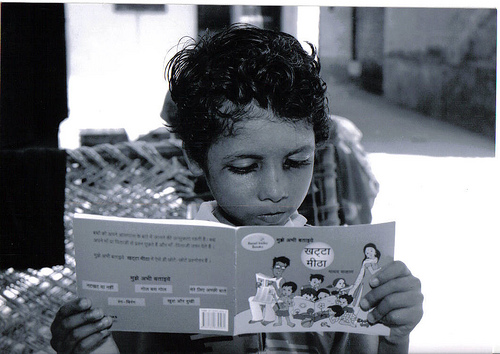According to recent reports, more and more Indian technology companies plan to fuel virtual classroom growth across the country. For example, Educomp Solutions is a pioneer in this field, having launched the curriculum-building digital content library software Smartclass in 2004–the software is now utilized in more than 12,000 K-12 schools across 560 districts in India, with a growth rate of nearly 20 schools a day.

Faster learning assessment tools, like a teacher’s ability to display questions about the current lesson while students submit real-time answers on their own personal answering devices, allow instructors to quickly review or repeat concepts that students have not understood. However, with a population as large as India’s and in a country where many rural schools still lack basic necessities like electricity and plumbing, some wonder whether there is a greater need for infrastructure improvements across the board. In the meantime, companies like Educomp have offered three-to-five-year payment programs in order for more schools to participate.
India is a country with more than 1.3 million schools and the world’s largest population of youth between five and 24 years of age. In a 2012 Education Outlook report, New Delhi-based consultant firm Technopak estimates that India will require at least six million more trained teachers by 2020 to attain the world average in student-teacher ratios. With huge illiteracy and teacher training gaps, India may be looking to the private sector for cutting edge education tools. Yet, for the time being, private schools seem to be disproportionately reaping the benefits. Only 20% of India’s schools are private, and only ten percent of those private schools currently utilize multimedia classroom teaching. The remaining majority of government schools are reportedly making little to no progress in utilizing information and communications technology.
Despite this glaring disparity, tech stakeholders hope to see the market for digitized school products (1) reach between USD two and four billion by 2020 in private schools and (2) grow to five times the current market value of USD $750 million in government schools. Much of this classroom IT growth is already concentrated in large cities. Studies also show high growth rates in slightly smaller tier-two and tier-three cities, like Barpeta (Assam), Sohagpur (Madhya Pradesh), and Balia (Uttar Pradesh). Smaller cities view digital classroom products as a proactive step in boosting competitiveness. In order to attract this smaller-city demographic, India’s Pearson Education Services is offering monthly payment models equivalent to about two US dollars per student a month.
Broad technology initiatives to develop “smart schools,” distribute subsidized electronic tablets, and utilize Free and Open Source Software (FOSS) are making inroads as private/public partnerships work to experiment with projects’ feasibility and affordability. Moreover, northern India has its eye on attracting international students to the region by building education hubs. The government of Punjab recently announced its plans to develop four education cities, aiming to attract satellite campuses of prestigious international universities.
Creative Commons Love: thahs on Flickr.com





















